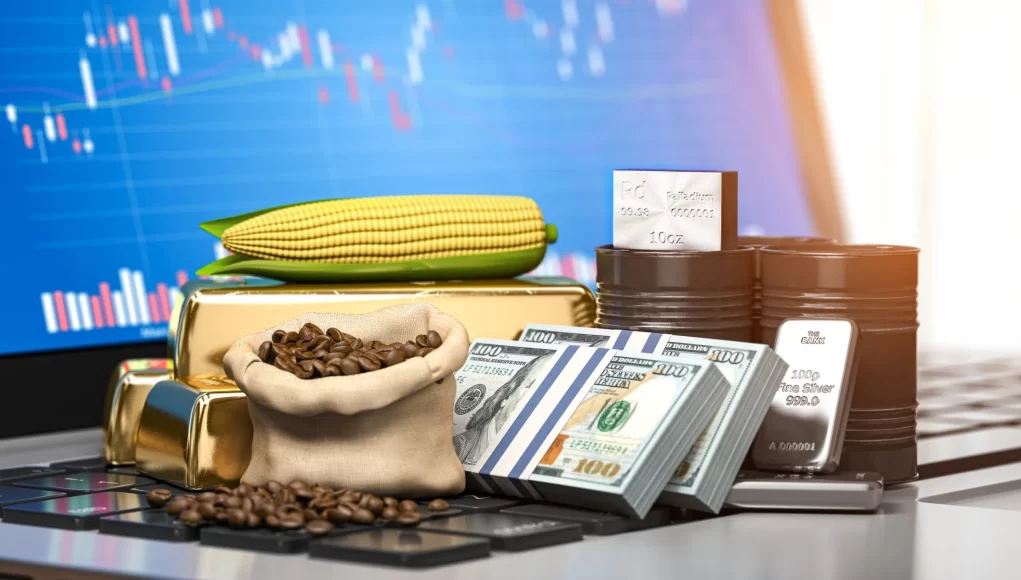Commodity trading is a fascinating yet complex area of the financial markets, offering investors the opportunity to profit from the price movements of raw materials. Whether you’re looking to diversify your investment portfolio or venture into the world of commodities, understanding how commodity trading works is essential. In this beginner’s guide, we will break down the basics of commodity trading, types of commodities, how to get started, and the risks involved, so you can make informed decisions.
What is Commodity Trading?
Commodity trading refers to the buying and selling of raw materials or primary agricultural products, typically through financial markets. These commodities are standardized and traded in bulk, meaning that each unit of a commodity is interchangeable with another of the same type and grade. Unlike stocks, which represent ownership in a company, commodities represent tangible goods that are vital to the economy.
The prices of commodities fluctuate based on various factors, including supply and demand, geopolitical events, weather conditions, and market speculation. Traders engage in commodity trading to profit from these price changes, either by buying low and selling high or selling high and buying low.
Types of Commodities
Commodities are generally divided into two broad categories:
- Hard Commodities: These are natural resources that are extracted or mined. Hard commodities include metals like gold, silver, copper, and oil, as well as energy resources such as natural gas and crude oil. These commodities are essential for industrial processes and are heavily influenced by global economic factors.
- Soft Commodities: Soft commodities are agricultural products or livestock. These include crops like wheat, corn, coffee, cocoa, sugar, and cotton, as well as livestock such as cattle and hogs. Soft commodities are more affected by seasonal factors, climate conditions, and crop yields.
How Does Commodity Trading Work?
Commodity trading generally occurs in two main ways:
- Spot Market: In the spot market, commodities are bought and sold for immediate delivery at the current market price. This is known as the “spot price.” Spot markets are typically used for physical delivery of commodities, such as oil, grains, and precious metals, where the transaction occurs quickly.
- Futures Market: The futures market involves the buying and selling of contracts for the future delivery of commodities at a predetermined price. These contracts specify the quantity and delivery date of the commodity, but the transaction is settled later. Futures contracts are primarily used for speculation and hedging purposes. Traders speculate on the future prices of commodities, aiming to profit from price changes.
How to Get Started in Commodity Trading
- Choose a Trading Platform: To get started with commodity trading, you need to choose an online trading platform or brokerage that offers access to commodity markets. Look for platforms that provide educational resources, customer support, and advanced trading tools to help you make informed decisions.
- Select Your Commodities: Once you’ve chosen a platform, it’s time to decide which commodities you want to trade. Consider factors like market volatility, supply and demand conditions, and global events that could affect the prices of the commodities you are interested in. It’s important to start with a few commodities before expanding your portfolio.
- Learn the Basics of Analysis: Commodity traders use various types of analysis to predict price movements:
- Fundamental Analysis: This involves studying the underlying factors that affect the supply and demand for a commodity. For example, analyzing weather conditions for agricultural commodities or geopolitical events that could impact oil prices.
- Technical Analysis: This involves using charts and historical data to identify price trends and patterns. Technical analysis helps traders make decisions based on past price movements.
- Practice with a Demo Account: Many trading platforms offer demo accounts, allowing you to practice trading commodities without risking real money. This is a great way to familiarize yourself with the platform and test out your trading strategies.
- Start Trading with Small Capital: As a beginner, it’s advisable to start trading with a small amount of capital that you are willing to risk. Commodity trading can be volatile, and it’s essential to learn from your experiences without facing significant financial losses.
The Risks of Commodity Trading
Commodity trading can be highly profitable, but it’s important to understand the risks involved:
- Price Volatility: Commodity prices can be extremely volatile, influenced by factors such as political events, weather conditions, and global economic trends. This volatility can lead to rapid price changes, which can result in significant gains or losses for traders.
- Leverage Risks: Many traders use leverage to increase their position size, borrowing funds to amplify their potential profits. While leverage can increase profits, it also magnifies potential losses. Beginners should exercise caution and only use leverage when they fully understand the risks involved.
- Market Speculation: Speculating on commodity prices involves predicting future price movements. However, predicting the direction of commodity prices is challenging, and even experienced traders can make incorrect predictions. Commodity trading should be approached with caution, especially for those new to the market.
- Global Events: Commodities are affected by a wide range of global events, including natural disasters, geopolitical tensions, and government policies. For instance, a drought could significantly affect the supply of agricultural commodities, leading to price fluctuations.
Strategies for Commodity Trading
- Hedging: Hedging is a strategy used by businesses and traders to protect themselves from price fluctuations. For example, a farmer might use futures contracts to lock in a price for their crop before harvest, reducing the risk of price drops.
- Day Trading: Day trading involves buying and selling commodities within a single trading day to capitalize on short-term price fluctuations. Day traders use technical analysis to make quick decisions based on market movements.
- Swing Trading: Swing traders aim to profit from short- to medium-term price movements over several days or weeks. This strategy involves buying commodities when prices are low and selling when they rise.
- Trend Following: This strategy involves identifying and trading in the direction of the prevailing market trend. Traders who use this strategy believe that commodities tend to move in trends, and they attempt to profit by riding the wave of these trends.
Conclusion
Commodity trading offers exciting opportunities for investors looking to diversify their portfolios and profit from the fluctuations in prices of raw materials. However, it’s essential for beginners to approach the market with caution, armed with knowledge of the different types of commodities, trading strategies, and risks involved. By starting small, practicing on demo accounts, and learning to analyze markets effectively, you can become a successful commodity trader.
Whether you’re interested in trading hard or soft commodities, the key is to stay informed and make decisions based on solid research and analysis. Commodity trading isn’t for everyone, but with the right strategies and risk management, it can be a rewarding investment opportunity for those willing to learn.



































